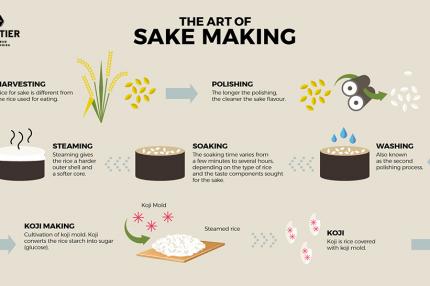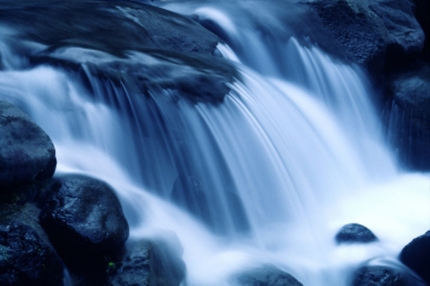HOW CAN THE COMMUNICATION OF SAKE BE SIMPLIFIED?
by Alexandre Fréguin, Best Sommelier of England 2018
Both historical and cultural, sake is growing exponentially in popularity with consumers. In recent years, we have seen more and more adventurous pairings at the world's finest tables, impressing guests as well as sommeliers and chefs.
However, the complexity of production and the specific vocabulary of sake can sometimes create a barrier to understanding for the consumer. That is why it is essential to know how to translate exotic and unfamiliar terminology into an audible and accessible language to deliver the right information and to stimulate the consumer's interest.
Fear of the unknown is a deterrent to diversifying sake consumption. Prejudices lead its detractors to say that sake is too strong in alcohol or has a "particular" taste. However, there is more than one argument in favour of this exceptional drink. Our consumers are thirsty for a change of scenery, and sake will allow them to travel through the glass. Here are a few facts to highlight about this exceptionally high-quality beverage made from fermented rice.

The growing popularity of a product that is natural by definition!
Many great chefs and outstanding restaurants in Europe and North America have developed a Japanese-influenced cuisine over the last decade. This interest can be attributed to enriching travels, exposure to a new gastronomic culture and the pleasure of discovering unknown flavours. The chefs found a local cuisine of extreme refinement, based on fresh and simple products, which can rely on a beverage perfectly adapted to its reality, sake, just as outstanding French or European cuisine comes alive with the great wines of its terroir.
Take some of the current trends: "natural" and "vegan" certifications. If you care a little about what you serve, you will soon realize that sake fits this profile perfectly. It contains no additives since Japanese regulations prohibit it. Therefore, sake can be considered a "natural" and "vegan" product, made only with rice, water, natural yeast, and the famous koji. This argument is excellent to present to clients, given current trends.
In the same vein, it is interesting to note that, unlike wine, sake is free of sulphites, additives that often spark arguments between sommeliers, customers, and wine lovers. Again, since there are no additives in sake because of strict regulations that allow only rice, water, yeast and koji in its brewing, sake has no sulphites. Knowing this, the old prejudices that sake is a chemical catch-all with no real attributes other than giving a headache will probably evaporate!
Simplifying the vocabulary and the classifications
One challenge that the world of sake confronts Western alcohol lovers with is the complexity of its vocabulary and classifications. Education and a good dose of humility are the keystones to popularizing sake. Of course, "Chardonnay" is easier to remember than "gohyakuman-goku"
(a variety of rice). It is best to avoid overly technical terms and stick to the essentials so that the client is not intimidated and understands what is in the glass.
For example, it is better to emphasize the location and prefecture where the sake comes from, as this is directly related to the quality of the water used. Just like wine, knowing the provenance of what we are about to taste gives us a glimpse of the taste to come. Water that is rich in potassium and phosphorus will give a sake with rich and persistent aromas. Soft water will result in a clearer and sweeter sake. Iron and manganese are two elements that are detrimental to the quality of sake.
To learn more about the impact of water on the aromatic profile of sake, read the article Water: Nourishment and the Reflection of Terroir, available on the #SakeGraphy.
Rice polishing also falls into this category, as it defines the aromatic profile and the quality level of the sake. Once again, it is vital to be clear about your explanation. Why not draw a parallel with a more familiar and better-known product? I like to use comparisons with wine. For example, the variety of rice can be compared to the grape variety, while a "junmai daiginjo" classification would be somewhat equivalent to the level of a grand cru.
Finally, the back label is our best ally and can provide essential information to simplify the taste profile of the sake paired with the food served. Usually (before COVID-19), the customer and the sommelier are on the same level since the information is available to both. Examining the back label together avoids being perceived as lecturing.
The back label is even more valuable when buying a bottle of sake, as it provides useful information, including the date of bottling and marketing. Since sake is not the product with the highest turnover (depending on where it is purchased), it would be a shame to lose its pure and enchanting fragrances because of a lengthy stay on a forgotten shelf.
Let's stop talking and taste!
A question that often comes up for sommeliers and requires clarification: "Isn't sake that alcoholic drink that is always served hot, in a small shot glass, at the end of a meal?"
On the contrary, not all sakes are served hot! Nowadays, most great sakes are rather served chilled, like white wines. When considering more refined styles, such as ginjo and daiginjo sakes, it is important to handle them more delicately and to chill them well. If you let the temperature rise slowly in the glass, as is the case with white wine, you can appreciate the aromatic complexity that develops as the temperature changes.
As for warming, if done skillfully, it will vary the profile of sake, especially for junmai-type sakes. The heating process itself has precise terminology: "atsu-kan" refers to a temperature of around 50 °C to 55 °C while "nuru-kan" refers to a temperature of about 40 °C to 45 °C. The name "nuru-kan" is more suited to the style of sake rich in umami (natural amino acids) and a less polished rice grain, such as junmai and honjozo sake. The warming process can also extend to futsu-shu (the equivalent of table wine applied to sake).
Depending on the method used (yamahai or kimoto), junmai-type sakes will develop an aromatic profile accentuated by higher temperatures, even if they are also fabulous when served cold! Generally, the more robust types of sake have an expression that intensifies with heat. The same is valid with sake aged in wooden barrels (taruzake).
Once you determine the right serving temperature, the next step is to find the ideal glass for tasting and appreciating sake. Choosing a suitable receptacle can be more complicated than it sounds. The trio of Japanese ochoko, guinomi and sakazuki cups are aesthetically pleasing, and both the connoisseur and the collector will acknowledge their real value. There is a reason why the cups are small: they allow you to serve your guests and guests of honour more often. Service is a crucial element of Japanese culture, as it indicates the importance of taking care of the comfort of one's guests.
However, traditional small cups can also make tasting more complicated. Again, one can draw a parallel with wine since larger glasses adapted to different styles of sake have recently appeared on the market, closely resembling wine glasses. I recently discovered the Kimura Glass company, which produces a range of glasses adapted to different sake styles. Stay tuned!
Warming, not only in the glass!
Let's agree that in 2021, public awareness is a necessity in the face of climate change, which has become so prominent and threatening in recent years. The violence of climatic disturbances (extreme heat, torrential rains, floods, windstorms, etc.) directly affects rice cultivation. This fragile plant suffers from extremes, just as do vines in the art of winemaking.
The rice plant used for sake production is much taller than the varieties used to grow rice for domestic consumption. This makes it sensitive to winds and heavy rains and leads to the risk of collapse. High temperatures have a direct effect on the plant as well as on its fertility during flowering. Also, in terms of grain size, a reduction in biomass will complicate the rice polishing process prior to sake brewing.
Finally, the thermal amplitude can be an advantage in hot regions that have cooler nights. However, several regions of Japan are now facing tropical nights, where temperatures remain high (25 °C overnight), with a direct effect on grain maturity levels.
The subject of climate change is of great concern to many Japanese scientists who have tackled the problem head-on to ensure that this 2500-year-old art can continue to shine around the world!
The final word
In conclusion, we can only hope that sommeliers and amateurs will commit themselves to keep the sake tradition alive through the acquisition of new knowledge and an ever-renewed curiosity. This will involve personal work for each of us and the pooling of expertise to continue the extraordinary development of sake culture, mainly through various events, such as the Kura Master in Paris.
Kampai!
PS: Interestingly, Word always translates the word sake as "rice beer"!


